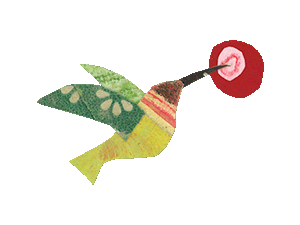Storytelling for the Urban Skeptic
At school, Silke and I sometimes like to put parents or visitors on the spot by asking them to tell a story. You can tell almost instantly who is comfortable in their skin. Folks who are simply themselves do it best. They search for a minute, tell a brief story – about a ladybug, a snowflake, or something unusual that happened that day – then look up, shrug, and smile.
The kids love it. The stories are rarely amazing, but the children are interested in who people are. They notice when someone is present with them. It doesn’t matter if the story is a little short or strange. It’s real.
Listen to this article or download the podcast above.
Contrast this with parents, often highly intelligent, who wrack their brains, bite their lips, then make excuses because they’re not prepared. They don’t believe they can tell a good story, so they tell nothing at all. We’ve all been there. It’s perfectly understandable. As adults, we forgive and forget. But the message from the children’s point of view rings loud and clear – I have nothing to share with you.
Part of our work at How to Tell Stories to Children is to help folks remember that you have something to share. Storytelling doesn’t belong to flaxen-haired mothers with perfect children. It belongs to all of us – carpenters, nurses, accountants. Folks who eat too many pancakes. There’s a reason people tell stories – it brings us together. All of us.
A comprehensive picture of storytelling is beginning to take shape from fields as diverse as neurology, evolution, psychology, and anthropology. Put simply, storytelling isn’t an accident. It’s one of the primary cognitive tools humans evolved. It is an elegant technology built on top of one of the most complex neural architectures known to man – the human brain. Storytelling isn’t just for fun, it is a cognitive method that helps us share information, retain attention, and build trust – critical tools for social creatures like you and me.
But the most amazing thing about storytelling is the relationship that forms between speaker and listener, parent and child, during a story. This is storytelling’s original function in the human organism. It binds social groups together. It gives us a meta-narrative. Why? Because groups of humans are more likely to survive than individuals.
But let’s not get too far. None of this knowledge is required to engage in storytelling, just like nobody needs to tell you how to walk or pick up a stick. You just do it. It comes naturally. That’s why it belongs to all of us, and no one in particular.
At How to Tell Stories to Children we often adorn our messages with earthy photos and cute nature bunnies. That’s cool. It’s legit for who we are. But in the modern era, storytelling is sometimes lumped with earthy, natural stuff, just like computers and technology get lumped with urban landscapes. The truth is, it’s all real. We’re all humans, and we all love our kids.
The fundamental message that is erupting from these diverse fields of study is that storytelling is an extremely rich tool. It’s a deeply human characteristic, and some people are even beginning to wonder if storytelling might serve a purpose beyond human beings. It might be one of nature’s most efficient ways to organize information in non-hierarchically structured neural circuits.
Whoa. Slow down, Tex. The essential point is this – storytelling builds the bond between parent and child, any parent and child. You’re welcome to be a nature-loving mother or father. You can wear all the burlap and tweed you want. But you’re also welcome at this table if you like fast cars and HTML. Everybody belongs here. You even belong here if you feel like shit and you’re struggling with your newfound parenthood. This stuff is hard. That’s okay.
It’s okay if your child watches too much TV. It’s okay if it’s frozen dinner tonight. It’s okay if you got linoleum ‘cause there wasn’t any bamboo left at Home Depot. Telling stories to your children is going to bond them with you no matter who you are and what snazzy jacket you got on. Children who are the recipient of that loving bond are going to grow up happy. Happy children are more likely to be successful.
Still, in the modern era we are so surrounded by stories that it’s sometimes easy to count ourselves out. Aware of such blockbuster hits as Spiderman and The Little Mermaid, we quickly grow intimidated. How can we compete with the likes of Disney and Marvel?
Parents who doubt themselves are usually guilty of the Great Story Fallacy: in order to be a great storyteller, I have to tell a great story. There’s nothing wrong with a great story, of course, but the search often leads to a snipe hunt. We think we have to tell the biggest and most engaging story of all time. The search takes us outside of ourselves as we try to catch (or memorize) that elusive snipe and give it to our kids. That’s fine if it works for you, but if it causes you to doubt yourself then it’s not working. Come back and tell a simple story. Kids like simple stories. They like you.
The Storytelling Loop is a newsletter bringing you tips, science, and real-life examples of how storytelling builds the connection between parent and child. It is a joint project of Silke Rose West and Joseph Sarosy, the authors of How to Tell Stories to Children. Originally self-published, the book is due out from Houghton-Mifflin later this year.

